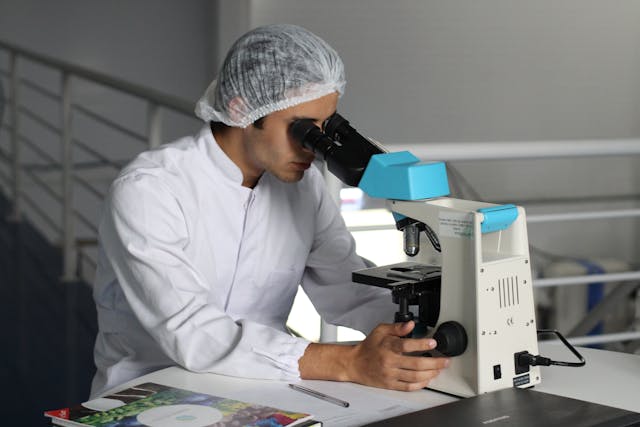
GCSE Combined Science is a qualification that combines aspects of biology, chemistry, and physics into a single course of study. It is typically taken by students in the UK at the end of their secondary education, usually in Year 11 (ages 15–16). Here’s an overview of what GCSE Combined Science covers:
- Biology Topics:
- Cell Biology: Structure and function of cells, cell division, and specialization.
- Organization: Organisms, tissues, organs, and organ systems in plants and animals.
- Infection and Response: Disease transmission, immunity, and the body’s response to infections.
- Bioenergetics: Cellular respiration, photosynthesis, and energy transfer in living organisms.
- Homeostasis and Response: Control systems in the body, nervous system, hormonal coordination, and response to stimuli.
- Inheritance, Variation, and Evolution: Genetics, inheritance of traits, genetic variation, and evolutionary processes.
- Chemistry Topics:
- Atomic Structure and the Periodic Table: Structure of atoms, atomic models, elements, compounds, and the periodic table.
- Bonding, Structure, and the Properties of Matter: Chemical bonding, properties of substances, and structure of materials.
- Quantitative Chemistry: Calculations involving masses, moles, and concentrations in chemical reactions.
- Chemical Changes: Types of chemical reactions, rates of reaction, and energy changes during reactions.
- Energy Changes in Chemical Reactions: Exothermic and endothermic reactions, energy transfers, and conservation of energy.
- The Rate and Extent of Chemical Change: Factors affecting reaction rates and equilibrium in reversible reactions.
- Physics Topics:
- Energy: Forms of energy, conservation of energy, energy transfers, and efficiency.
- Electricity: Current, voltage, resistance, circuits, electrical power, and electrical safety.
- Particle Model of Matter: States of matter, changes of state, particle theory, and gas pressure.
- Atomic Structure: Structure of atoms, isotopes, and nuclear radiation.
- Forces: Types of forces, motion, balanced and unbalanced forces, and Newton’s laws of motion.
- Waves: Properties of waves, wave behavior, sound waves, light waves, and electromagnetic waves.
GCSE Combined Science typically includes practical activities, experiments, and investigations to develop students’ practical skills, scientific inquiry, and analytical abilities. The course aims to provide students with a broad understanding of key scientific concepts and principles across biology, chemistry, and physics, preparing them for further study, employment, and lifelong learning in science-related fields.
